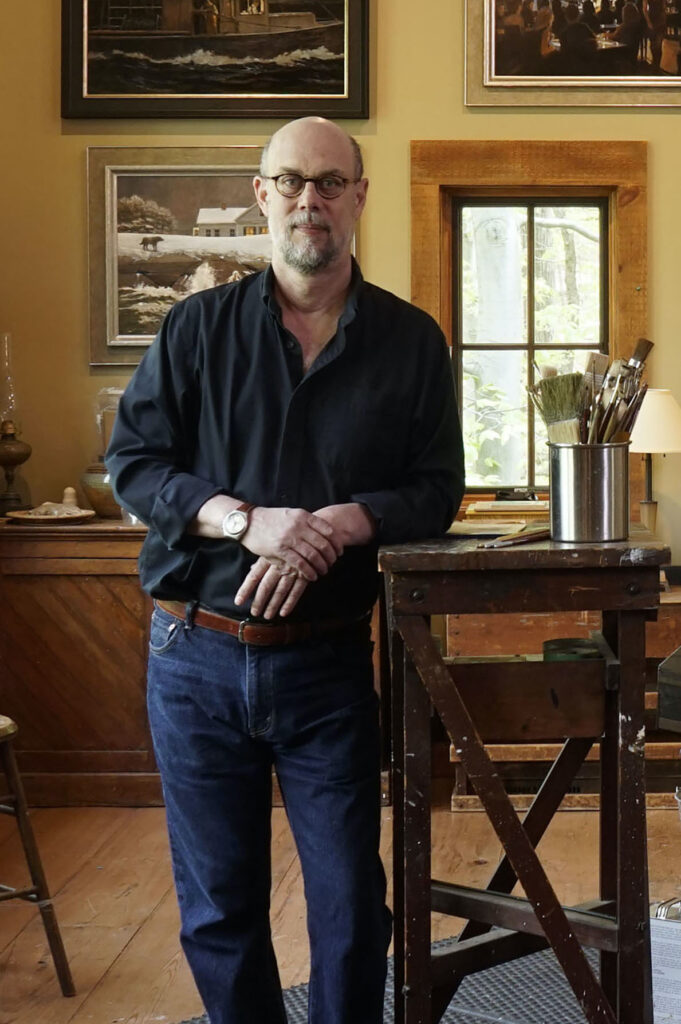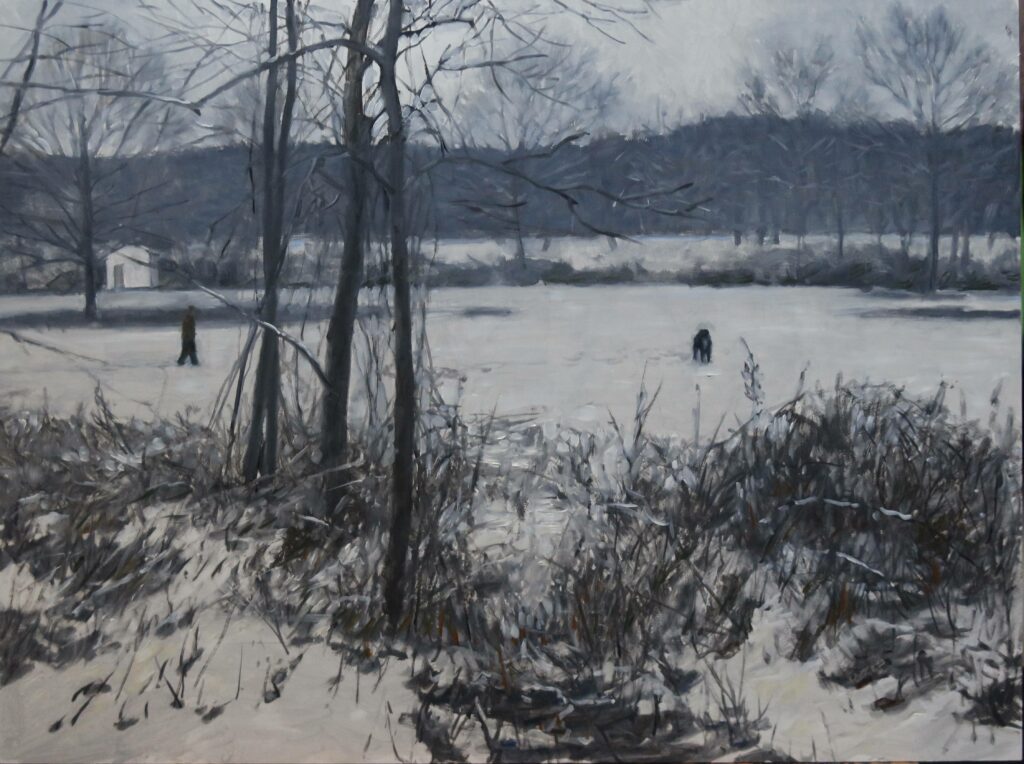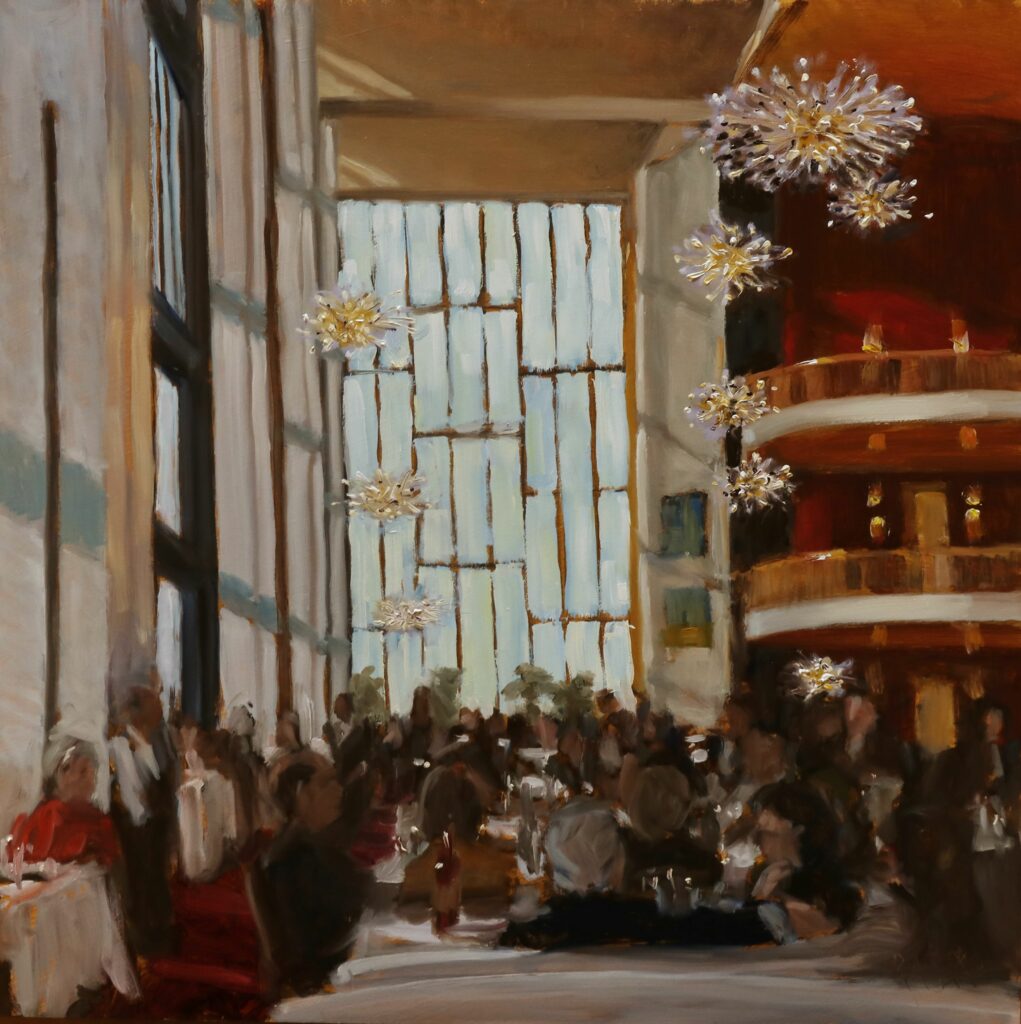Painter Robert Beck will be showcasing his latest work in an exhibition at Morpeth Contemporary called “Here and Now.”
This is Beck’s first solo exhibition since his exhibit at the Michener Art Museum. At the exhibition, which opens this weekend on Sept. 14 and runs until Oct. 6, residents and visitors are able to observe diverse images of life painted by Beck at the gallery in Hopewell Borough on West Broad Street.
“I’m a representational painter,” Beck said. “I paint our place in time and our here and now. These are paintings a person can connect with.
“They are paintings of the world around us now and that is what makes them stand out in the eyes of the art community.”
Beck explains that the style is the same, but the subject matter is kind of different in each of his paintings being showcased in the exhibit “because it is whatever catches my attention, and I identify something out of the ordinary of typical life. I convey visually what is it about the thing that stopped me.”
“Maybe after looking at it for 10 minutes, you realize it was the dust or the sound or smell, or how the guys were running around or how the trucks were coming and going or the water that squirted out of something,” he said. “Something that made it noteworthy.”
Beck challenges himself with something he has never done before with every piece of work he has painted and continues to paint.
“It can be a new brush, a new paint color, a new subject something I don’t know how to do,” he explained. “It guarantees that when I’m done with the painting, I will have either discovered something that has worked for me or discovered what doesn’t.”
Beck, who grew up in Bucks County, Pa., has not done a solo exhibition in three years. In that time, he has done 300 paintings. Ruth Morpeth, Morpeth Contemporary gallery owner, and Beck looked at about half of the paintings.
“If Ruth and I are going to have this conversation with people we don’t want to slap something up on the wall and say come in and buy these things,” he said. “We want to put something up on the wall where people can walk through, and they will say that one really grabbed me tell me about it.
“I want to have those conversations. The grail of every artist is to get their work seen and this is my communication.”
The exhibition opening this weekend features Beck’s paintings of New York life, more specifically, Manhattan’s Upper West Side and many other subjects and locations. Additionally, his paintings (Thicket) and (December Scallops) are also being featured after each returned from museum exhibitions.
“[Thicket] started out as a challenge on two places,” Beck said. “One place is a path where I used to walk my dog when my dog was alive. Alongside the path was this overgrown stuff that you would not dare walk through because it would grab your ankles, and you would not get anywhere.
“I did not want to paint the detail. I did not want to paint the twigs. I wanted to paint the thicketness (dense growth).”
As he gets older, Beck started bundling his challenges and with “Thicket” he wanted to paint the thicketness of the overgrowth and additionally challenged himself working with black and white colors.
It was exercise in creating depth and getting an impression from a very detailed thing he didn’t want to make detailed; he explains, adding he also always likes his painting to have a heartbeat.
December Scallops was showcased in the American Society of Marine Artists National Exhibition. Beck’s painting in various works subject locations include not just New York but traveling the Mississippi River, Africa, depicting life in maritime communities in upper Maine, and locations in Delaware Valley.
Beck’s paintings have had museum exhibitions at the James A. Michener Art Museum, City of Trenton Museum at Ellarslie, and the Maine Maritime Museum. He also has had 32 solo gallery exhibitions.
“You know right away they are Robert’s paintings,” Morpeth said. She first showed Beck in 1997.
“They have always connected with people, and each exhibition reveals an expansion of depth and eloquence. The images are engaging and deftly painted. They mean something.”
Beck’s paintings establish a dialogue with the observer.
“We spend so much of life on autopilot,” he said. “I’m just showing them what is in my mind when I pay attention to my life and when I think people engage [my work] and realize a lot of stuff is going on in their lives too, it kind of grounds you a little bit. It takes you off of autopilot for a period of time.”




